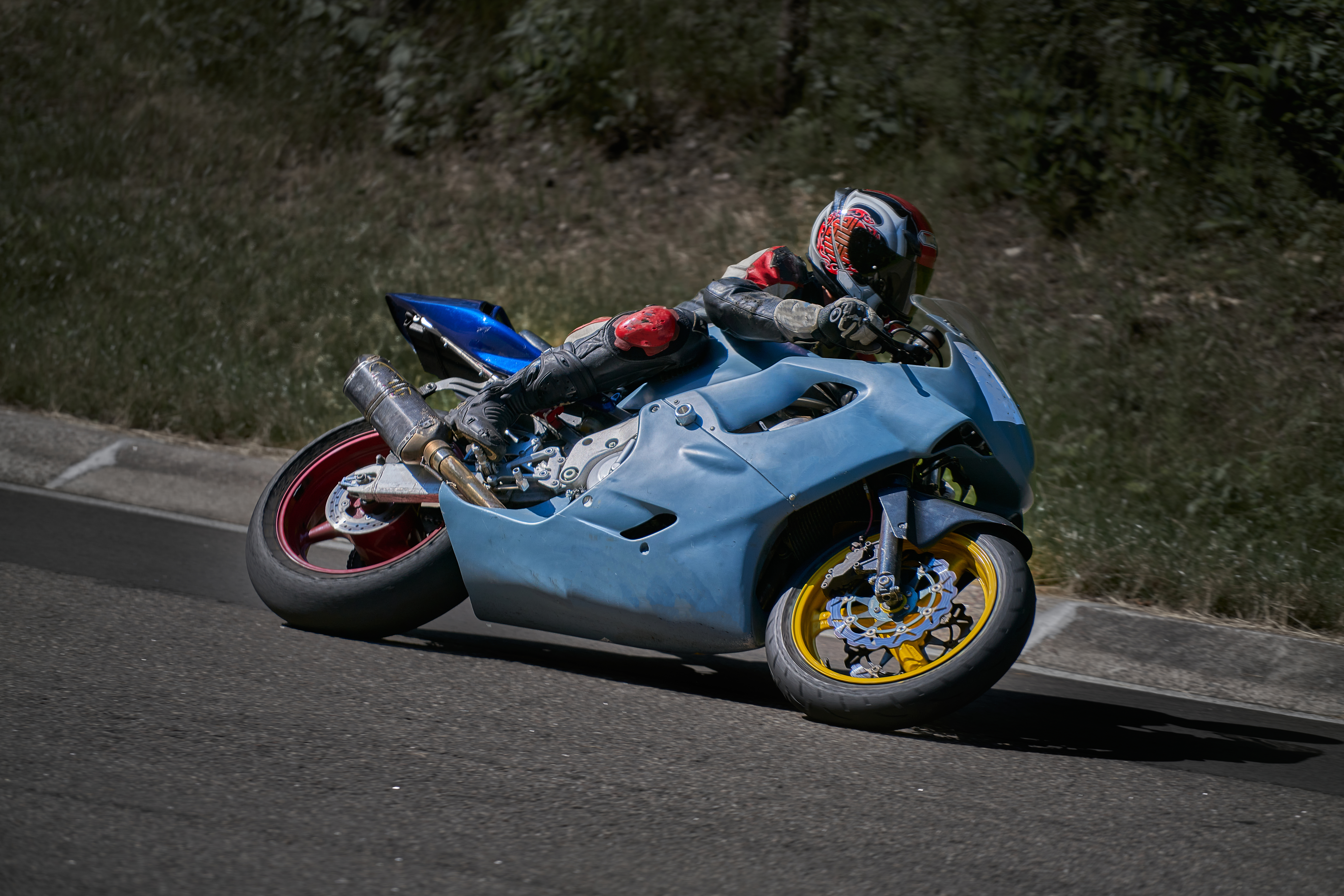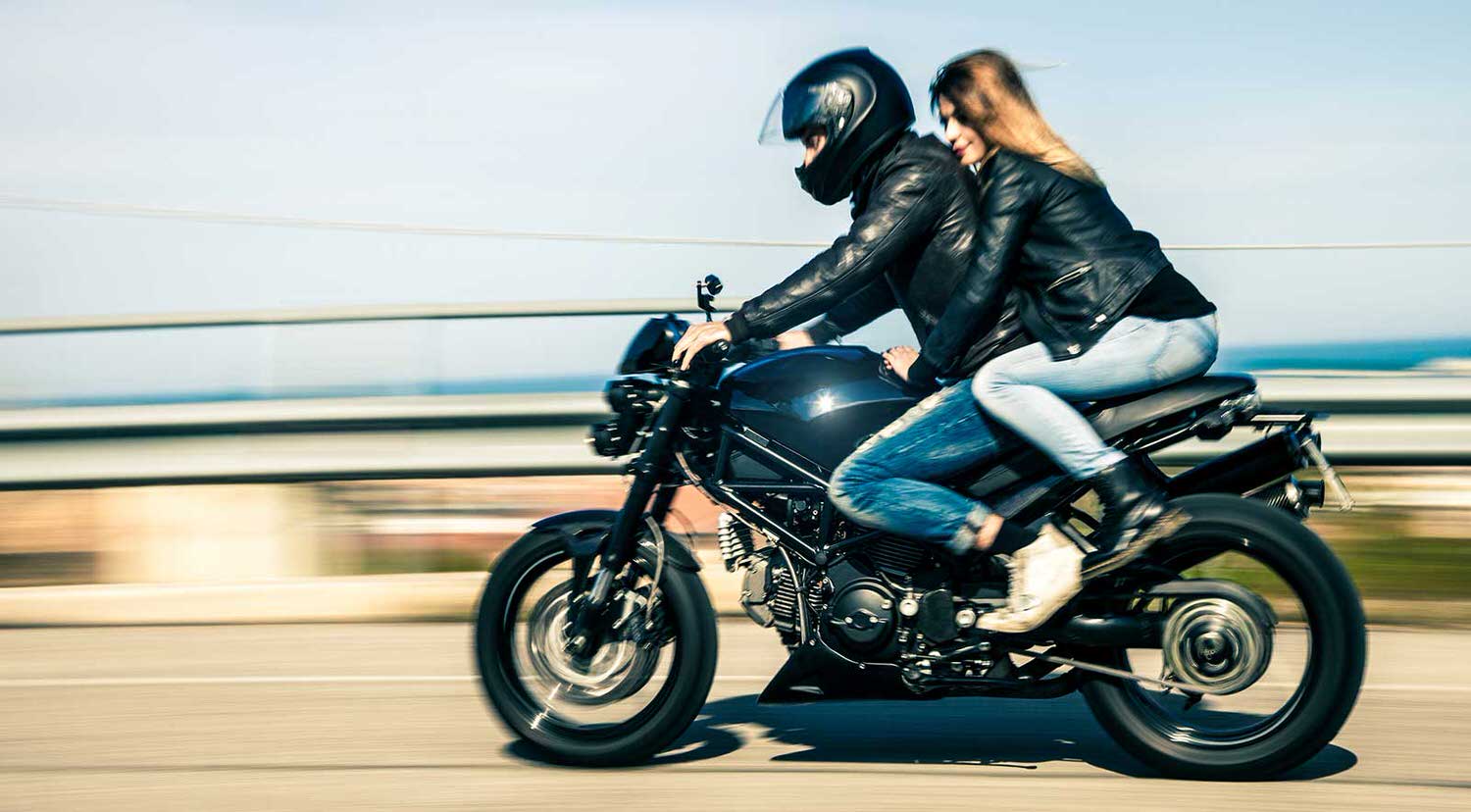5 min read
How to Ride a Motorcycle with a Passenger
 Madison "The Machine" Davis
:
Apr 13, 2023 4:57:59 PM
Madison "The Machine" Davis
:
Apr 13, 2023 4:57:59 PM

Learning how to ride a motorcycle with a passenger? Before you hit the road with a passenger, it's important to know what you're getting into. The extra weight and new center of gravity will change how the bike rides, and you need to be prepared for it. But with the right knowledge and preparation, bringing a friend along for the thrill can be a fun and enjoyable experience for both of you.
At RideNow, we've logged countless "two-up" miles, and we've learned a thing or two about bringing a passenger on board for the ride. From ensuring proper gear to adjusting your riding style, these are our top tips for making your next ride with a passenger a smooth and comfortable one. So read on and get ready to hit the open road with confidence and ease, knowing that you and your passenger are in good hands.
Riding Passenger on Motorcycle – The Dos and Don’ts
Is there anything more freeing than feeling the wind in your hair as you zip down the open road on a motorcycle? Sharing that experience with a passenger can be even more special. But, before you invite someone to ride shotgun, there are a few things you need to keep in mind. Here are the dos and don’ts of riding with a passenger on your motorcycle.
Do:
Get a bigger bike. If you’re used to riding solo, you might want to consider upgrading to a bigger bike before you hit the open road with a passenger. A heavier bike will be more stable with an extra person on board and can better handle the weight distribution.
Do:
Give them a crash course. Before you head out, it’s important that your passenger knows the basics of motorcycle safety. Teach them how to hold on, where to place their feet, and what to do if they start to feel uneasy.
Don’t:
Forget about your extra gear. When you’re riding with a passenger, you’ll need to adjust your gear to account for the extra weight. Make sure your tires are properly inflated and that your suspension is in good working order.
Do:
Choose the right route. When you’re planning your ride, keep your passenger in mind. If they’re a beginner, stick to smooth, straight roads. You can always mix things up once they’ve gotten more comfortable.
Don’t:
Ride too fast. It’s important to take things slow when you have a passenger on board. Remember, they’re not used to the experience and might not be comfortable going too fast.
Do:
Communicate. Throughout the ride, keep your passenger updated on what’s happening. Let them know when you’re going to turn, stop, or accelerate. This will help them feel more comfortable and in control.
Don’t:
Ride without a plan. Before you set out, map out your route and make sure you know where you’re going. This will help you avoid getting lost and will give you both peace of mind.
Riding with a passenger on your motorcycle can be a blast, but it’s important to follow these dos and don’ts to ensure a safe and enjoyable experience for everyone involved.
How Passengers Affect Handling
Riding with a passenger will change every aspect of your motorcycle’s handling. Braking is one of the most noticeable differences. Your stopping distances will be longer and you’ll need to apply considerably more braking force should you want to stop in a hurry.
You’ll also need to get on the brakes earlier and smoother than you usually do, meaning you’ll need to plan any stops well in advance. Trailing your back brake while performing slow speed maneuvers can help to smooth things out – it’ll also be more effective as there’s more weight over the rear tire.
The motorcycle won’t accelerate as quickly as it usually does, and the front end will be more likely to go skyward if you jerk the throttle. The first time I rode with a passenger resulted in the biggest accidental wheelie of my life.
The key here is smooth acceleration, it’ll keep both your passenger and motorcycle happy.
Going around corners can be an eye-opener if you’re not used to riding with a passenger. Some passengers have the tendency to sit straight up as you corner – it’s a natural instinct.
The trick here is to tell your passenger to look over your shoulder on the side that you’re turning. This will help keep the bike steady and keep both your and your passenger’s movements consistent.
The running theme here is to keep your riding smooth, in every way – think of riding in very wet conditions. You may notice that this extra focus makes you a smoother rider in general.
Passenger Instructions
Going over a few ground rules with a passenger before you set off could save a few headaches in the future.
First things first, no sudden movements. Some passengers think the perfect time to have a full body stretch is while you’re going around a bend, so make sure to address this. Their movements should be consistent with yours.
It’s also good to over a few hand signals before you start. You can use whatever you want but these are what I use: One tap on the shoulder means “slow down, you’re going too fast”, and two taps mean “pull over”. And a simple thumbs up for “Everything’s good, keep going”.
Tell your passenger to get on and off on the left-hand side, to ensure they don’t burn themselves on the muffler.
When your passenger is getting on, keep the bike as upright as possible, bracing it on each side with your legs, and do the same when they’re getting off.
Some riders keep their motorcycle on its side stand when a passenger is getting on, but this is ill-advised, as it can be difficult to get upright with the added weight.
The slower you travel, the more gravity will try and pull you down. So, keep your motorcycle as upright as possible when traveling at slow speeds and when stopping. Trailing your back brake while performing slow speed maneuvers can help to smooth things out – it’ll also be more effective as there’s more weight over the rear tire.
Tell your passenger not to put their feet down when stopping – this could unbalance you and the motorcycle.
Your passenger can either hold onto you or the handholds if your motorcycle has them. Make sure they brace themselves for acceleration and braking, keeping their body tight to yours. This will stop your passenger from banging into you under heavy braking.
Heavier passengers should use the gas tank to brace themselves under heavy braking – the last thing you want is your passenger pushing you over the handlebars.
Adjusting A Motorcycle For A Passenger
Common sense applies here – carrying a heavy passenger on a small motorcycle can be hard work. Likewise, bigger and more powerful motorcycles generally handle passengers with relative ease.
Apart from the issue of size and power, your motorcycle will need a pillion seat and rear footrests.
If you’re only carrying a pillion over a short distance, there’s no real need to adjust your motorcycle. But, if you’ll be covering any real distance, it’s worth your while to adjust your motorcycle’s suspension and tire pressure for the extra weight – the suggested settings for passengers should be in your owner’s manual.
One of the best things about motorcycling, apart from actually riding, is sharing the experience with a passenger. But, a sure way to turn someone off the motorcycle, is by riding too fast or recklessly.
So, please keep riding safe and sensible when carrying a passenger. With this in mind, go and spread the joys of motorcycling to as many people as you can.
You can also refer to this video for a few extra tips and tricks
